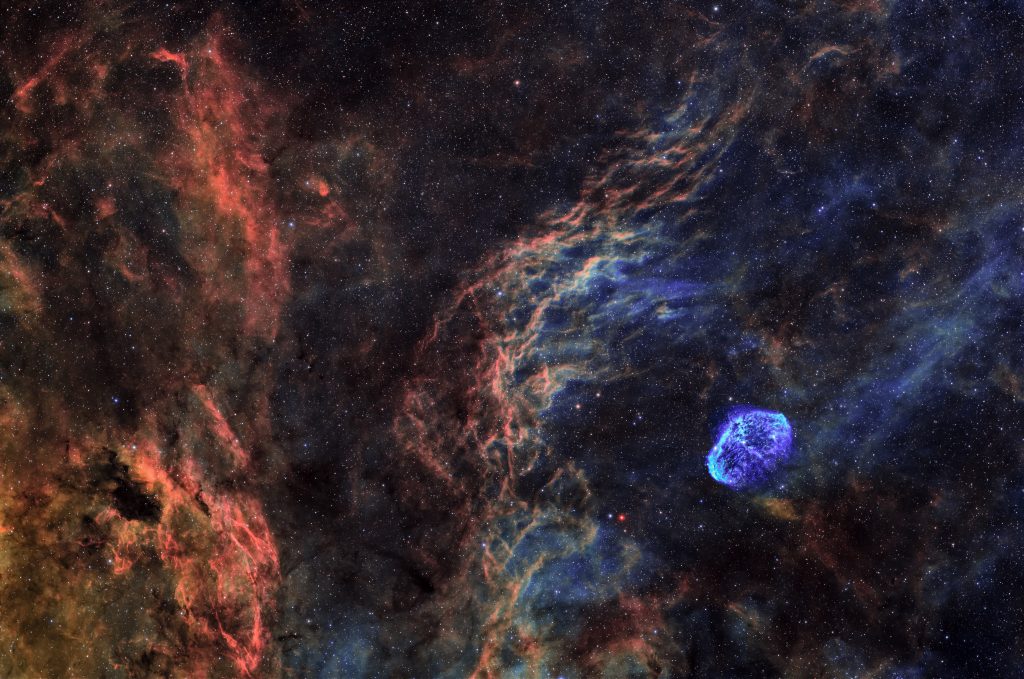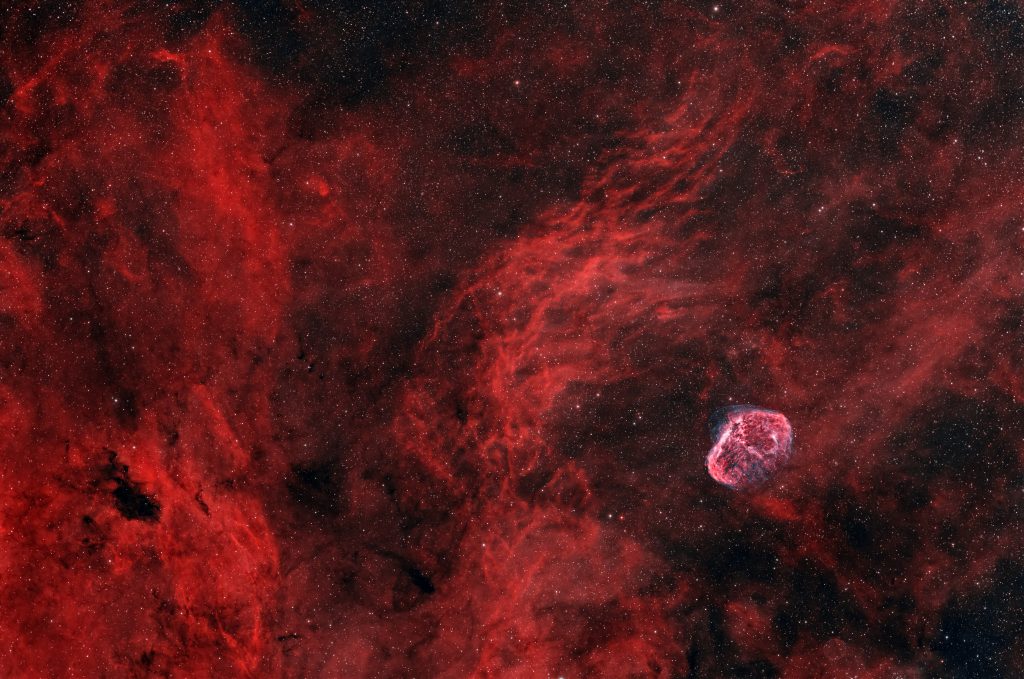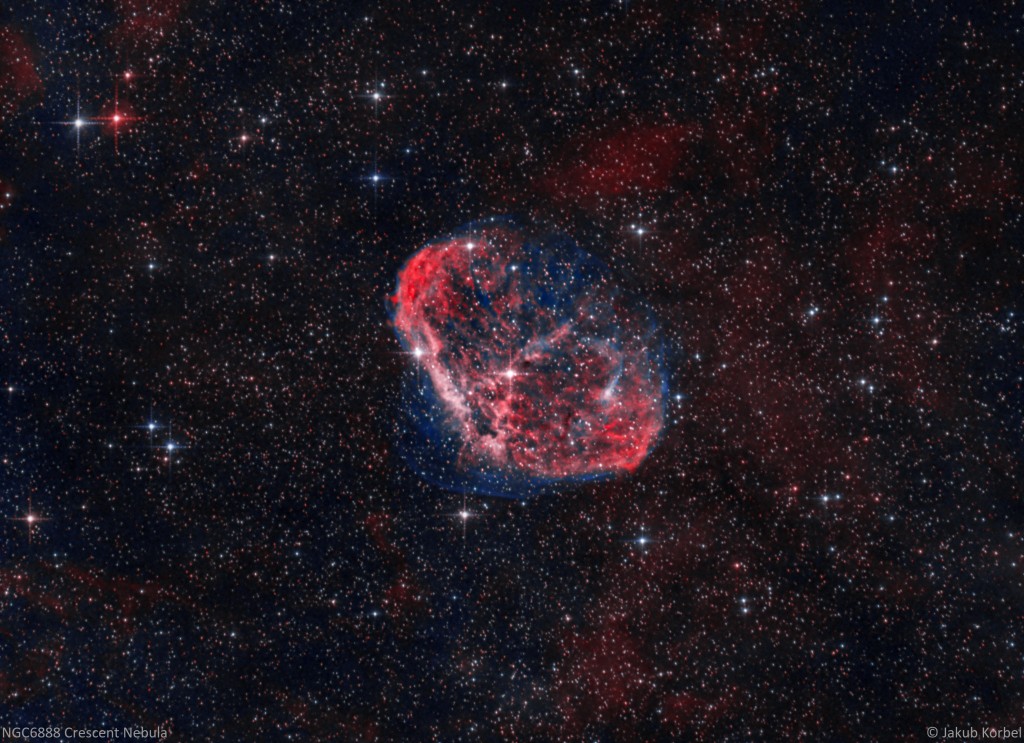The Crescent nebula is an HII region in the constellation Cygnus. I photographed this deep-space object before with a relatively long focal length. The Crescent nebula is not the only nebula in the constellation Cygnus. In fact, this constellation is overpopulated with either emission or planetary nebulae. This is the reason why I picked a shorter focal length than before (wider field of view), positioned the Crescent nebula in the corner of the CMOS chip, and let the photos be collected for 3 subsequent nights. In total, I exposed 153 photos, each 5 minutes long. This means nearly 13 hours of integration time, which makes it one of the longest total exposure I spent on a single deep-space image.
Hubble palette image (SHO):

Bi-color image (HOO):

| Telescope | Sharpstar 94EDPH |
| Aperture | 94 mm |
| Focal length | 414 mm |
| Mount | Rainbow Astro RST 135 |
| Autoguiding | ZWO 174MM, QHY Mini Guide Scope |
| Camera | ZWO 2600MM @-10°C |
| Corrector | F4.4 Quad Reducer |
| Filters | Antlia Ha, OIII, SII 3 nm |
| Exposure | 153x300s, Gain 100, bin 1×1, |
| Date | 2022-09-06 |

